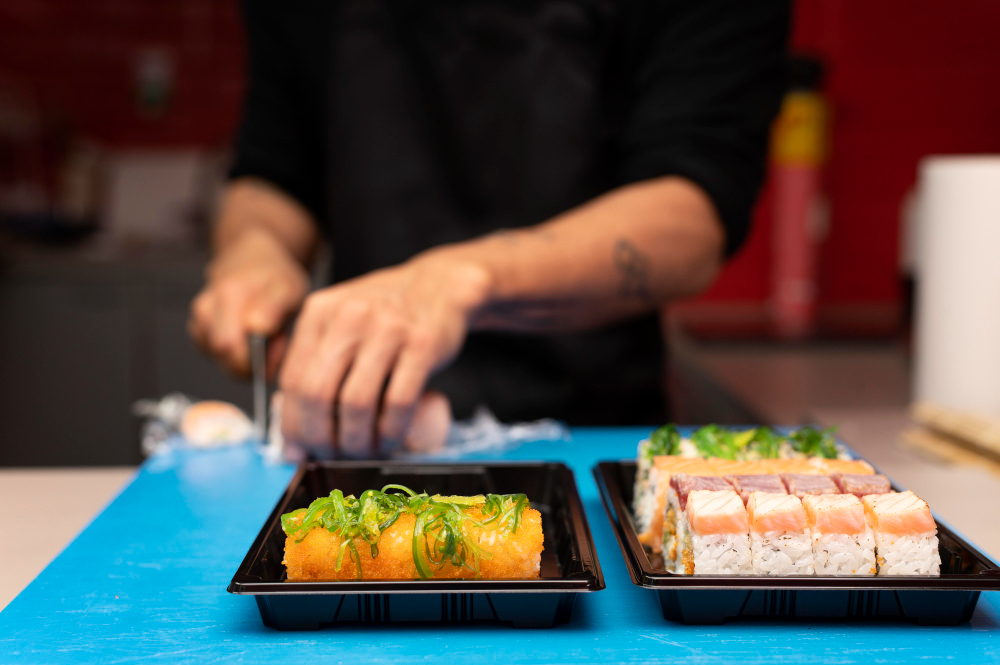Sushi is increasingly popular in Australia, with a growing number of restaurants striving to meet high customer expectations for freshness, presentation, and speed. Australian sushi diners appreciate beautifully crafted dishes served quickly without compromising quality. Unlike some other cuisines, sushi demands precision at every step—from cooking the perfect rice to slicing fresh fish and artfully plating each piece. The challenge for sushi restaurants is finding the right balance between maintaining traditional artistry and keeping up with a busy service pace. By adopting thoughtful approaches and some modern innovations, sushi chefs are finding creative ways to serve more efficiently while preserving the exceptional quality that makes sushi special.
Organise the Kitchen for Smooth Service
The design of the kitchen plays a bigger role in service speed than many realise. If chefs have to cross paths or move constantly to reach the tools they need, time and energy are wasted. A clear and logical setup, with dedicated zones for rolling, cutting, and garnishing, keeps everything flowing.
It also helps to group common tools and ingredients together. For example, sauces and garnishes can be kept close to the plating area, while knives and rolling mats stay near the prep space. When stations are organised in this way, chefs don’t lose momentum. Some restaurants even embrace open kitchens, where diners watch the process while chefs maintain a steady pace without distractions.
Use Machines to Save Time
While sushi has deep traditions, technology can help meet modern dining expectations. Machines designed for tasks such as rolling maki, pressing nigiri, or evenly cutting rolls can perform repetitive jobs quickly and consistently. This doesn’t mean replacing the chef’s skills—only supporting them so they can focus on presentation and creativity.
Many restaurants already benefit from high-quality commercial sushi machines in Australia, particularly during peak dining hours. These machines help maintain consistency while reducing stress on staff. They act as an extra set of hands, making sure service keeps up with customer demand without compromising the freshness or look of each dish.
Prepare Ingredients in Advance
Efficiency doesn’t mean preparing everything ahead of time, but certain items can be readied without sacrificing quality. Fish can be sliced into portions and stored safely, sauces batched in squeeze bottles, and garnishes such as spring onions or sesame seeds prepped in bulk.
Rice is the backbone of sushi service; large batches can be cooked in advance and kept at the correct temperature in dispensers. For the fish, techniques such as ikejime carried out beforehand can also support both freshness and speed during service. Having these essentials ready provides more time for the final touches that make each sushi dish stand out.
Keep the Menu Focused
Offering too many options can make service slower. A long menu requires more ingredients, more preparation, and more time for customers to decide. By focusing on a smaller, well-curated menu, service becomes faster and quality becomes more consistent.
Signature rolls, seasonal specials, or omakase choices can still provide variety. These options allow chefs to plan efficiently while giving diners something exciting to look forward to. The balance between variety and simplicity is what makes the difference between a chaotic kitchen and a smooth-running one.
Build a Skilled and Flexible Team
Even with the right tools and systems, staff training is crucial. A team that communicates well and understands each role can adapt quickly when the dining room fills up. Cross-training staff, so they can step into different positions as needed, ensures there are no weak points during peak hours.
Regular training also keeps standards high and builds confidence. When everyone understands the bigger picture of how service flows, the whole team works with more purpose. This teamwork shows in the customer experience, where efficiency feels seamless rather than rushed.
Blending Speed With Tradition
Faster sushi service doesn’t have to mean cutting corners. By designing a kitchen that flows, using machines wisely, preparing ingredients ahead, adopting smarter ordering systems, simplifying the menu, and building a skilled team, restaurants can serve more efficiently while keeping standards high. The right combination of tradition and innovation ensures that each plate of sushi is served both quickly and with the care it deserves.










